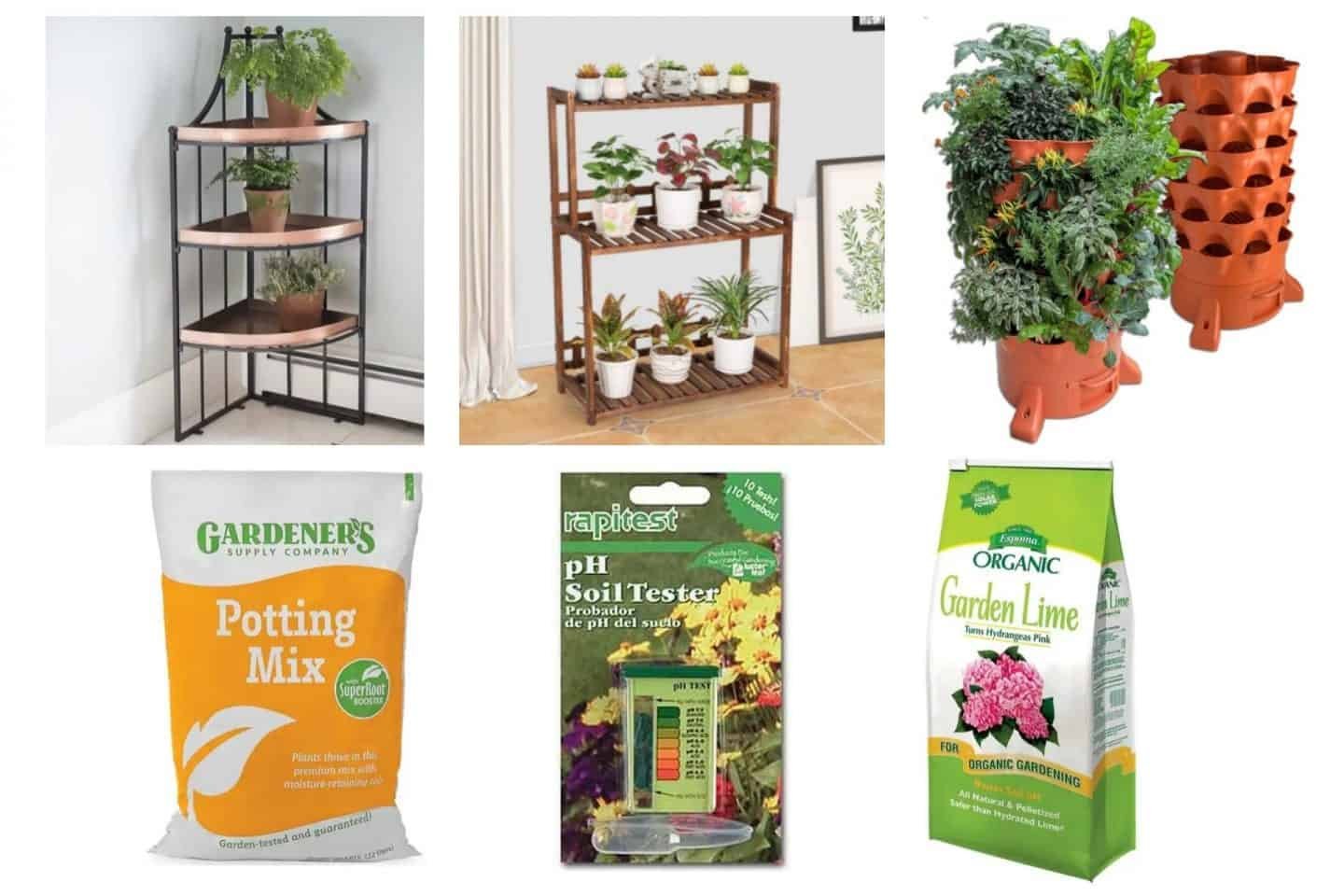The last time the population was so enthralled in becoming self-sufficient, the world was at war. Victory Gardens became popular during World War I and again in World War II as the government encouraged their citizenry to grow their own food. This was partly to help fund the war since the government spent less on food security for the people back home. The campaign also empowered the public and boosted morale since people believed they were doing their part just by turning their yard into a survival garden.
The coronavirus pandemic turned a lot of people into plant parents since home gardening offers some solace amidst the chaos. While some prefer ornamental plants like succulents, many are growing fruit-bearing trees and plants, vegetables, and herbs on their property. Some grow them in pots and planters while others are lucky enough to have a yard they can turn into a survival garden.

Benefits of A Survival Garden
1. Steady Food Supply
The main reason why people turn their yards into survival gardens is to have food to eat. During hard times when you can’t purchase food from stores, your survival garden will help provide a steady supply of food as long as you care for your plants the right way. Plus, it’s a great feeling to not rely on markets, grocery stores, or other people for your survival.
2. Fresh and Healthy Food At Your Disposal
Fruits, vegetables, and herbs that are grown for commercial consumption are likely exposed to chemicals such as pesticides and preservatives. You have the option not to use any of these nasty things in your survival garden.
3. Saves You Money
Growing your own fruits and greens means you don’t have to buy them elsewhere. That’s a lot of savings in the long run.

4. Gardening is Healthy
The act of gardening is in itself a great stress reliever. It’s a form of meditation for some as it cultivates mindfulness. Aside from its benefits to your mental well-being, gardening also helps improve your physical health since you get a bit of exercise and a dose of vitamin D.
5. Reduces Carbon Footprint
The fruits and vegetables you buy from the grocery store were packed and shipped from various parts of the country or even outside our boundaries. Tons of fuel were needed to make all these possible. Also, you don’t have to drive or commute to the store to buy produce.
6. Provides A Fun Activity for the Whole Family
The whole family can get in on the action and help grow food in your survival garden. The activity itself is a good bonding activity and it also helps improve everyone’s mental and physical wellness.
How to Start Your Survival Garden
1. Choose the Right Location
The success of your survival garden will depend mainly on its location. Don’t just pick a spot in your yard and start digging. Determine which area gets the most sunlight during the day and natural shade in the late afternoon. Your plants, particularly vegetables, will benefit from having eight to twelve hours of continuous sunlight.
If you don’t have a wide enough property, set up a container garden instead. Place your pots or planters on the roof or any area that gets the most sun. Even if you have your container garden indoors, you still need a spot with the most sunlight.
Make the most of your well-lit area by using plant shelves or stands. The main purpose of a plant stand is to keep your plants off the ground. Plant stands also add aesthetics to your garden. Some plant stands, however, lets you place one pot over the other. It’s like a multi-story structure where you get extra floor space by building upwards.
Your survival garden should also have access to water. This shouldn’t be that much of an issue since you can purchase a water hose. All you need is an outdoor faucet. You can also use a watering can though that will take a little more time and effort.
Take advantage of what Mother Nature offers. Set up an irrigation system in which you can collect rainwater and use it to water your survival garden.
2. Make the Most of Your Land
Plan a layout for your garden. You need to make proper use of the space so you can eventually harvest different crops. Simply put, the more area you have, the more plants you can grow as long as you do it right.
Make sure to grow companion plants at the same time. If you want potatoes, for example, you can also plant corn, celery, lettuce, onions, or spinach nearby. If you plant non-compatible plants beside each other, they will only hinder each other’s growth. Carrots, for example, do not like anise and dill as their neighbors.
3. Know What to Plant
Before anything else, determine the best foods to grow in your survival garden. You’ll be tempted to grow your favorites or at least the ones your family will eat. This is perfectly fine as long as the season is right.

During spring, you’re better off growing plants that can withstand frost. Some frost-tolerant vegetables are arugula, beans, Brussels sprouts, broccoli, cabbage, kale, leeks, mustard, radish, and spinach. For fruits, you can plant apricots, avocados, grapefruits, lemons, and honeydew. Other cold-tolerant fruit bearers you can in spring or winter include apples, peaches, blueberries, and strawberries.

In summer, the best crops to grow include cucumbers, tomatoes, squash, and peppers. During the fall season, you can start planting cauliflower, kale, lettuce, peas, and green onions.
You should adapt to the seasons so your survival garden will provide food for the whole year. Crop rotation or growing different kinds of crops at a time will also ensure your land stays healthy and disease-free.

Nutrition is another factor in choosing what crops to plant in your survival garden. Normally, you should plant those that are rich in nutrients and calories. But if you or someone in the family requires a particular nutrient because of a medical condition, then you should also grow the necessary crops. If the family has a history of heart disease, for example, you should plant plenty of leafy green vegetables, berries, and other heart-healthy crops.
4. Prepare the Land
Another important step in converting your yard into a survival garden is to prepare the land properly. Start by cleaning your yard. Remove trash, large rocks, and other materials that your garden won’t need.
It’s also necessary to do some weeding. Removing unwanted plants will help your plants grow healthier since they don’t have rivals for water and nutrients in the soil. Before you start weeding, do a little research on wild edible plants and medicinal plants. Some of the weeds in your yard may be safe for consumption. Others may have medicinal qualities. Set these plants aside after pulling them out. Use them as ingredients or to make herbal medicines instead of just throwing them in your compost pit.
You will do a bit of digging while weeding to get the roots and keep them from growing back. Once you’re done, you will now need to plow the land. Mix in some compost, manure, and potting mix to improve the quality of your soil. This will help your garden produce healthy and abundant harvests.

5. Improve Your Soil
First, determine what type of soil you have in your yard. It can be clay, sandy, silty, peaty, chalky, or loamy. The simplest way to determine the soil type is to use the water test. Simply pour water onto the soil and observe. If the water drains fast, the soil is too sandy. If it takes time for the water to sink in, you have clay soil.
You can also do the squeeze test. Simply grab some of the soil and squeeze. If it feels spongy, it’s peaty soil. Clay soil feels sticky but remains intact after squeezing. Sandy soil is gritty to the feel and will crumble Loamy and silty soils are smooth and will hold their shape for a while.
You should also check the acidity or pH of your soil. Use a pH test kit for this. Soil with a pH of 4.0 to 8.5 is fine but your plants will prefer 6.5 to 7 pH because of the high nutrient content. If your soil has a low pH level, you can increase it by adding ground limestone or dolomite, which are both rich in calcium carbonate. Meanwhile, sulfur and aluminum sulfate is used to lower the pH level of the soil.
Once you determine what type of soil you have in your yard, make the necessary adjustment. Add compost, mulches, and other organic materials to sandy soil to provide more nutrients for your survival garden. Chalky soil requires organic matter that takes time to decompose. Peat soil needs lots of well-decomposed organic matter before you start planting. Clay soil also needs decayed matter that should be added during fall.
6. Use Raised Beds
One way to increase the chances of having a successful survival garden is to use raised beds. They may be necessary if the soil in your yard is not suitable for gardening. A raised bed is simply an elevated box often made of wood that is filled with healthy soil. You can place it right above the ground or add legs so it’s high enough that you don’t have to bend when caring for your plants.

7. Grow in Containers
Don’t limit your survival garden to your yard. The more edible plants you grow, the more food you have. It’s that simple. Use small pots and planters to grow herbs indoors. You can place them in the kitchen and near the window where they can still get some sun. If they are not getting enough, just take them outside for some time.
8. Plant the Seeds
Once you’ve cultivated the land properly, it’s time to plant your seeds or seedlings. The general rule is to plant the seeds as deep as about t or 3 times their width. Don’t plant the seeds too shallow to keep birds and pests from easily digging them out. At the same time, avoid planting them too deeply as they will find it harder to sprout.
You also have to consider the distance between each seed. If you plant them too close to each other, they will be competing for water, nutrients, and space as they grow. Read up on the plants you wish to grow in your survival garden to know specific instructions and tips.
9. Provide Adequate Water
Aside from sunlight and healthy soil, plants need water. As mentioned, the simplest way to water your plants is to use a watering can. You can also use a pail of water or a garden hose. Another option is to set up an irrigation system that sources water from an outdoor faucet. You can also use a barrel to collect rainwater.
Find out how much water each of your plants needs to grow properly. Some are okay with weekly watering while others need to be watered daily. You should also know how much is too much. You don’t want to drown your plants.
10. Control Pests and Diseases
As much as possible, you don’t want to use pesticides on your survival garden. You want your produce and your family’s tummies to be free of such hazardous chemicals. Fortunately, you can prevent or at least minimize pests and diseases with natural methods.
11. Save Your Seeds
After consuming your harvests, keep the seeds and dry them for storage. Use them for the next planting season. You can save some of your money since you don’t have to buy new seeds. Plus, you’re ensured that you can keep planting new crops even after the apocalypse.

If you’re just planning to turn your yard into a survival garden, you should also think about growing more than you need. Take tomatoes, for example. You can plant enough for your daily needs but you can grow more and turn your excess harvest into survival food. Tomatoes can be preserved and if you do it the right way, you’ll have food even if all your tomato plants eventually die. Learn more about gardening and prepping over at Gentleman Pirate Club.























